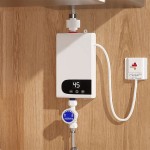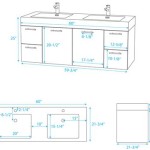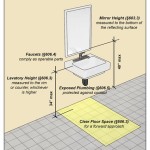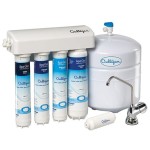Filtrete Under Sink Water Filter: A Comprehensive Guide
Access to clean, safe drinking water is paramount for maintaining health and well-being. The market offers various water filtration solutions, ranging from simple pitcher filters to complex whole-house systems. Among these options, under sink water filters provide a balance of convenience, performance, and cost-effectiveness. Filtrete, a brand known for its filtration products, offers a range of under sink water filters designed to improve water quality and reduce contaminants. This article provides a comprehensive overview of Filtrete under sink water filters, detailing their operation, installation, performance, and considerations for selection and maintenance.
An under sink water filter, as the name suggests, is installed beneath the kitchen sink, connecting directly to the cold water line. This placement offers a discreet and space-saving solution compared to countertop filters or whole-house systems. When the cold water tap is turned on, water flows through the filter before reaching the faucet, providing purified water on demand. This direct connection eliminates the need to fill pitchers or wait for filtration, making it a convenient option for everyday use.
Filtrete under sink water filters utilize various filtration technologies to remove contaminants from water. The specific contaminants removed depend on the filter model and its filtration media. Generally, these filters are designed to reduce sediment, chlorine taste and odor, lead, cysts, and other impurities that can affect water quality and taste. The filtration process can involve multiple stages, each targeting specific types of contaminants. Understanding the filtration capabilities of a particular Filtrete filter model is crucial for selecting the right option for individual needs.
Understanding Filtration Technologies Used in Filtrete Under Sink Filters
Filtrete under sink water filters commonly employ a combination of filtration technologies to achieve optimal water quality. These technologies often include mechanical filtration, chemical adsorption, and sometimes, catalytic reduction. The selection and arrangement of these technologies within a filter cartridge determine its effectiveness in removing specific contaminants.
Mechanical Filtration: This is typically the first stage of filtration, designed to remove particulate matter such as sediment, rust, and sand. Mechanical filters work by physically trapping these particles as water passes through a porous medium. The pore size of the filter determines the size of the particles it can remove. Finer pore sizes offer more thorough filtration but can also reduce water flow rate. Sediment filtration protects downstream filtration stages from clogging and enhances their performance and lifespan.
Chemical Adsorption: This process utilizes activated carbon to remove dissolved contaminants such as chlorine, volatile organic compounds (VOCs), and other chemicals that contribute to unpleasant taste and odor. Activated carbon is a highly porous material with a large surface area, which allows it to effectively adsorb these contaminants. The activated carbon in Filtrete filters is often derived from coconut shells or other natural sources. Different types of activated carbon are used to target specific contaminants, and the effectiveness of adsorption depends on factors such as the type of carbon, the contact time between the water and the carbon, and the concentration of contaminants.
Catalytic Reduction (Optional): Some Filtrete filters incorporate catalytic reduction technology to address chloramine and other difficult-to-remove contaminants. Catalytic carbon is a modified form of activated carbon that promotes chemical reactions that transform contaminants into less harmful substances. This technology is particularly useful in areas where chloramine is used as a disinfectant in the water supply. Catalytic reduction can also improve the taste and odor of water by removing residual disinfectants.
The combination of these filtration technologies allows Filtrete under sink water filters to provide a comprehensive solution for improving water quality. The specific configuration of these technologies varies depending on the filter model and its intended use. Consumers should carefully review the filter specifications to ensure that it is capable of removing the contaminants of concern in their water supply.
Installation and Maintenance of Filtrete Under Sink Filters
The installation and maintenance of Filtrete under sink water filters are crucial for ensuring optimal performance and longevity. Proper installation prevents leaks and ensures efficient filtration, while regular maintenance, primarily filter replacement, is essential for maintaining water quality. The process is generally straightforward, but understanding the steps and following manufacturer instructions is vital.
Installation: The installation process typically involves connecting the filter system to the existing cold water line under the sink. Most Filtrete under sink filters come with the necessary fittings and hardware for installation. The first step usually involves turning off the cold water supply to the sink. Then, the existing cold water line is disconnected from the faucet supply tube. A T-fitting is then installed onto the faucet supply tube, and the filter system is connected to the T-fitting and the cold water line. Some models may require drilling a small hole in the sink or countertop to mount a separate faucet for filtered water. It is important to follow the manufacturer's instructions carefully and use appropriate tools to avoid damaging the plumbing. If unsure, it is recommended to hire a qualified plumber to perform the installation.
Filter Replacement: Filter cartridges have a limited lifespan and must be replaced periodically to maintain optimal filtration performance. The replacement frequency depends on the filter model, water usage, and the level of contaminants in the water supply. Filtrete provides guidelines for filter replacement intervals, typically ranging from six months to a year. Replacing the filter is a relatively simple process involving disconnecting the old filter cartridge and installing a new one. Some Filtrete filters have a twist-and-lock design, making filter replacement quick and easy. It is important to flush the new filter with water for a few minutes after installation to remove any loose carbon particles or manufacturing residue.
Troubleshooting: Common issues with under sink water filters include leaks, reduced water flow, and unusual taste or odor. Leaks can often be resolved by tightening fittings or replacing O-rings. Reduced water flow may indicate a clogged filter, requiring replacement. Unusual taste or odor can also be a sign that the filter needs to be replaced. Regularly checking the filter system for leaks and monitoring water flow can help identify potential problems early on. Consulting the manufacturer's troubleshooting guide or contacting customer support can provide further assistance.
Proper installation and regular maintenance are essential for ensuring that Filtrete under sink water filters provide clean, safe drinking water. Following the manufacturer's instructions and addressing any issues promptly will prolong the life of the filter system and maintain its performance.
Factors to Consider When Choosing a Filtrete Under Sink Filter
Selecting the right Filtrete under sink water filter requires careful consideration of several factors, including water quality, filtration needs, flow rate, and budget. Understanding these factors and comparing different filter models will help ensure that the chosen filter meets individual needs and provides the desired level of water purification.
Water Quality: The first step in choosing a water filter is to assess the quality of the water supply. This can be done by reviewing local water quality reports or conducting a water test. Water tests can identify specific contaminants present in the water and their concentrations. This information is crucial for selecting a filter that is capable of removing the contaminants of concern. For example, if the water contains high levels of lead, a filter certified to remove lead is essential. If the primary concern is chlorine taste and odor, a filter with effective activated carbon filtration will be sufficient.
Filtration Needs: Once the water quality is assessed, the next step is to determine the specific filtration needs. This involves identifying the contaminants that need to be removed and the desired level of purification. Different Filtrete filter models offer varying levels of filtration, targeting different types of contaminants. Some filters are designed for basic filtration, removing sediment and chlorine taste and odor, while others offer more advanced filtration, removing lead, cysts, and other contaminants. It is important to choose a filter that meets the specific filtration needs based on water quality and individual preferences.
Flow Rate: Flow rate refers to the speed at which water flows through the filter. A higher flow rate provides more water on demand, which is important for households with high water usage. However, some filters with advanced filtration capabilities may have lower flow rates. It is important to balance filtration performance with flow rate to ensure that the filter meets the household's water needs. Filtrete provides flow rate specifications for each filter model, allowing consumers to compare different options and choose one that meets their requirements.
Budget: Filtrete under sink water filters vary in price depending on their filtration capabilities and features. It is important to set a budget and choose a filter that offers the best value within that budget. In addition to the initial purchase price, it is also important to consider the cost of replacement filters. Some filters have longer lifespans, reducing the frequency of replacement and the overall cost of ownership. Comparing the total cost of ownership, including the initial purchase price and the cost of replacement filters, will help make an informed decision.
By carefully considering these factors, consumers can select a Filtrete under sink water filter that meets their specific needs and provides clean, safe drinking water for their household. Researching different filter models, comparing their specifications, and reading customer reviews can provide valuable insights and help make an informed decision. Ultimately, the goal is to choose a filter that effectively removes contaminants, provides adequate flow rate, and fits within the budget.

Filtrete Advanced Under Sink Water Filtration Filter 3us Pf01 The Home

3m 3us Ps01 Professional Faucet Water Filtration System

Filtrete 3m Under The Sink Dual Stage Carbon Block Water Filtration System At Com

3m 3us Ps01 Professional Faucet Water Filtration System

Filtrete Advanced Under Sink Water Filtration Filter 3us Pf01 The Home

Filtrete 3m Single Stage Carbon Block Under Sink Water Filtration System At Com

Filtrete Maximum Under Sink Water Filtration System

Filtrete Under Sink Filtration Kit 3usmaxs01 Officecrave Com

Filtrete Advanced Under Sink Water Filtration Filter 3us Pf01 The Home

3m Filtrete Quick Change Advanced Under Sink Replacement Model 3us Pf01







